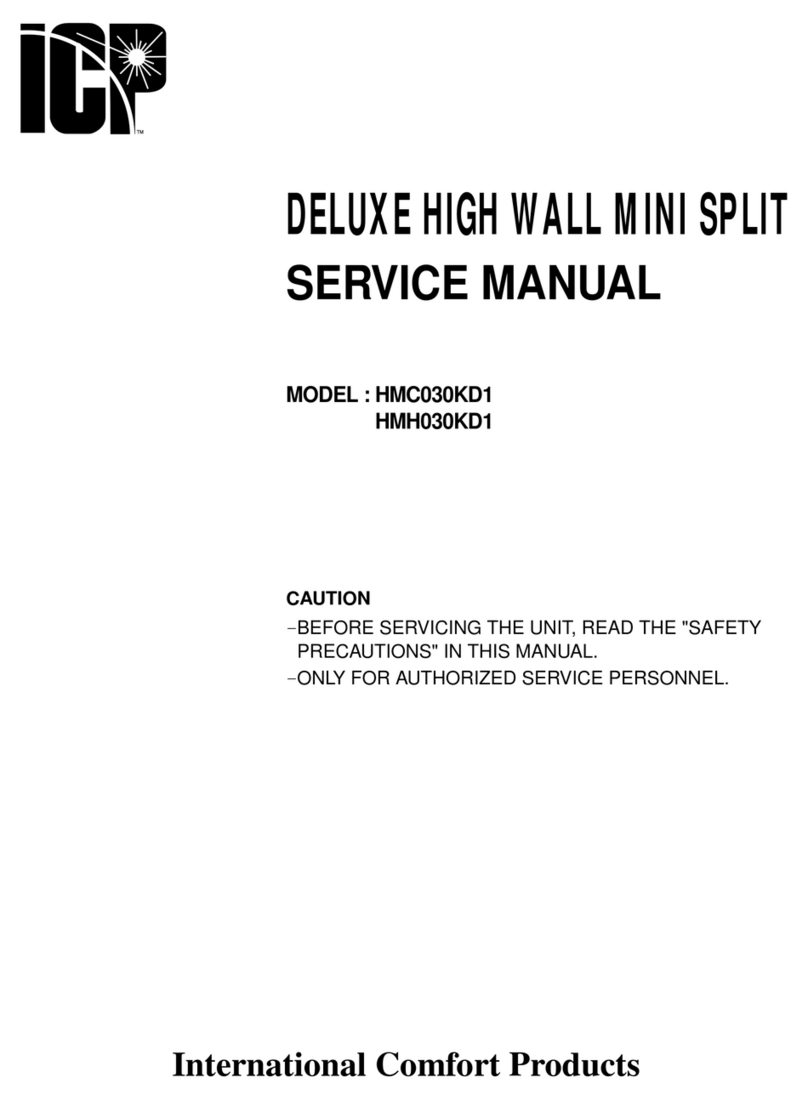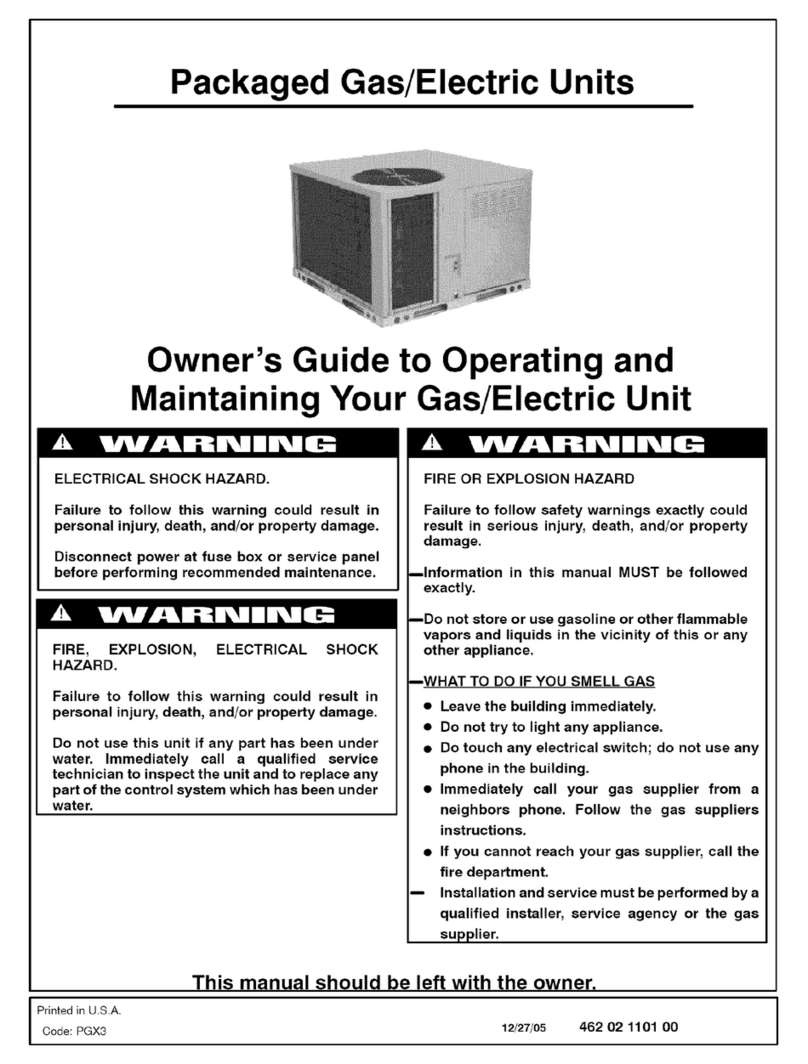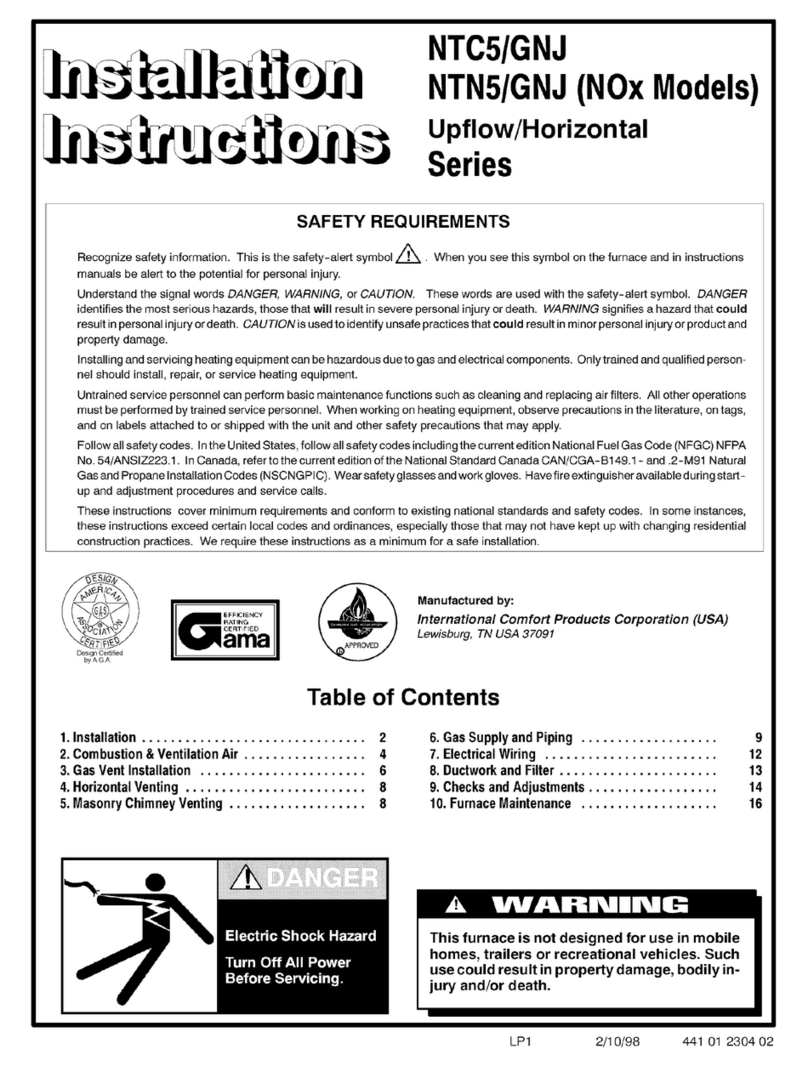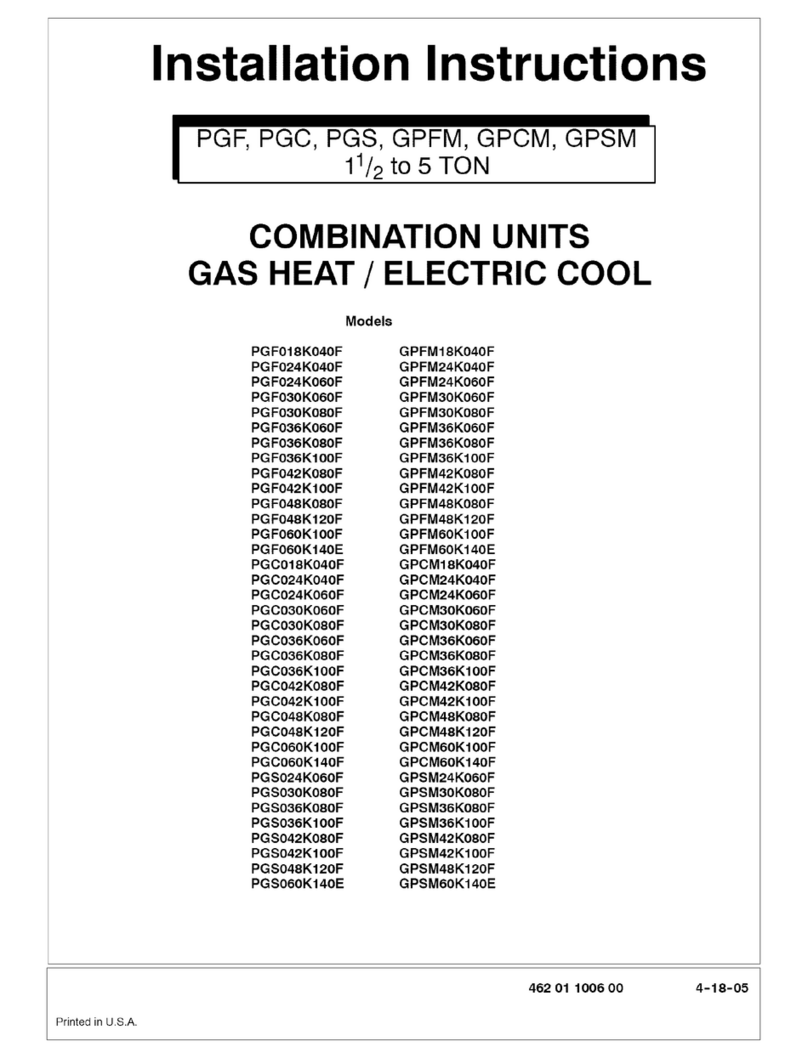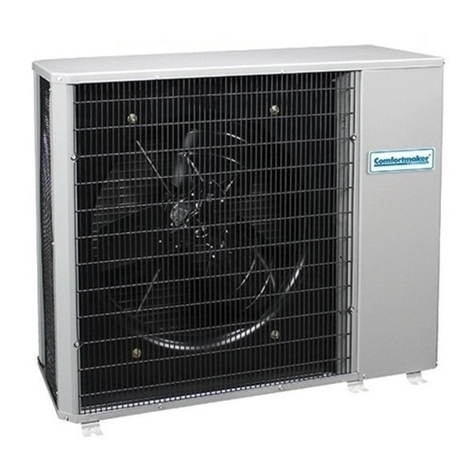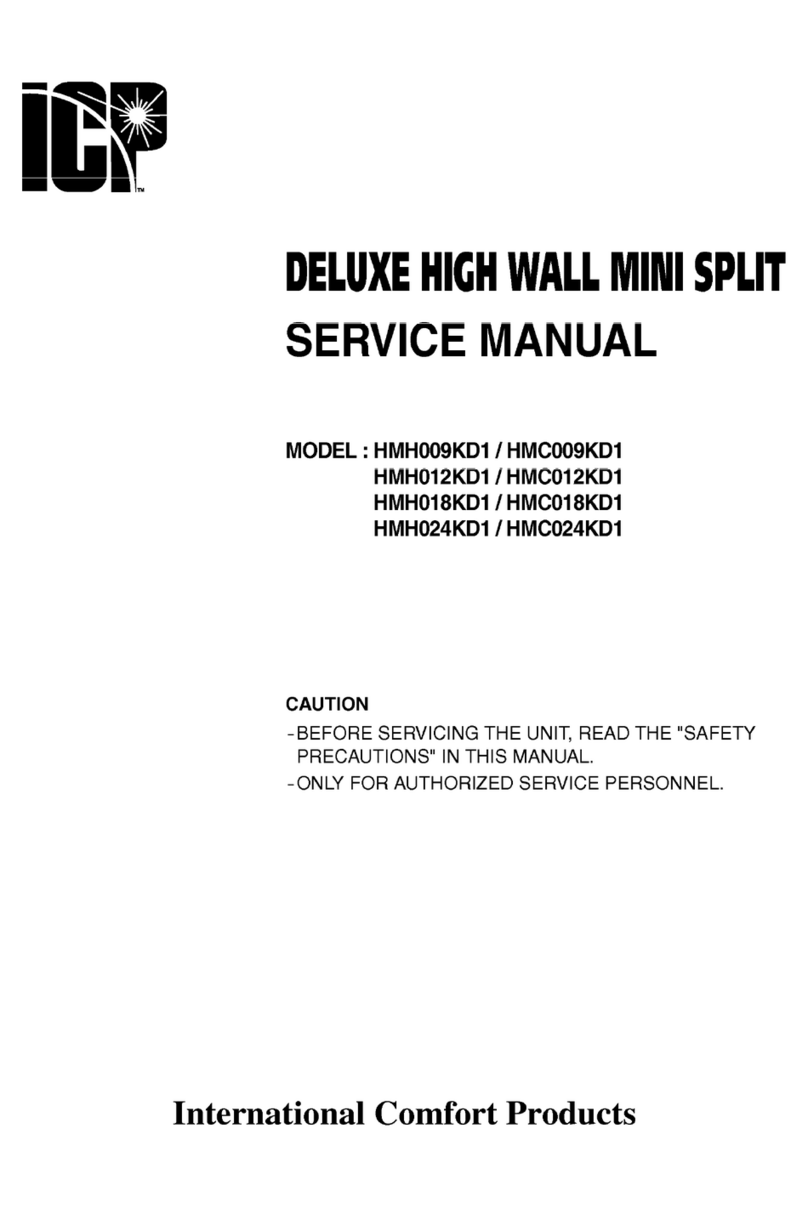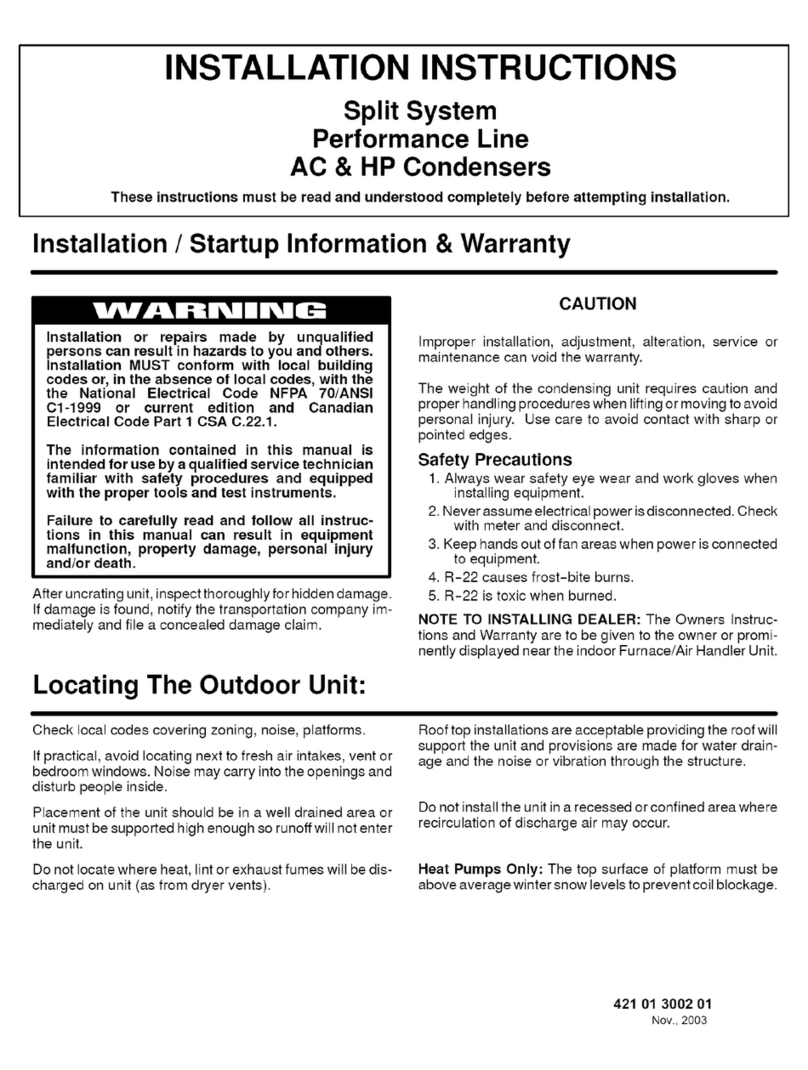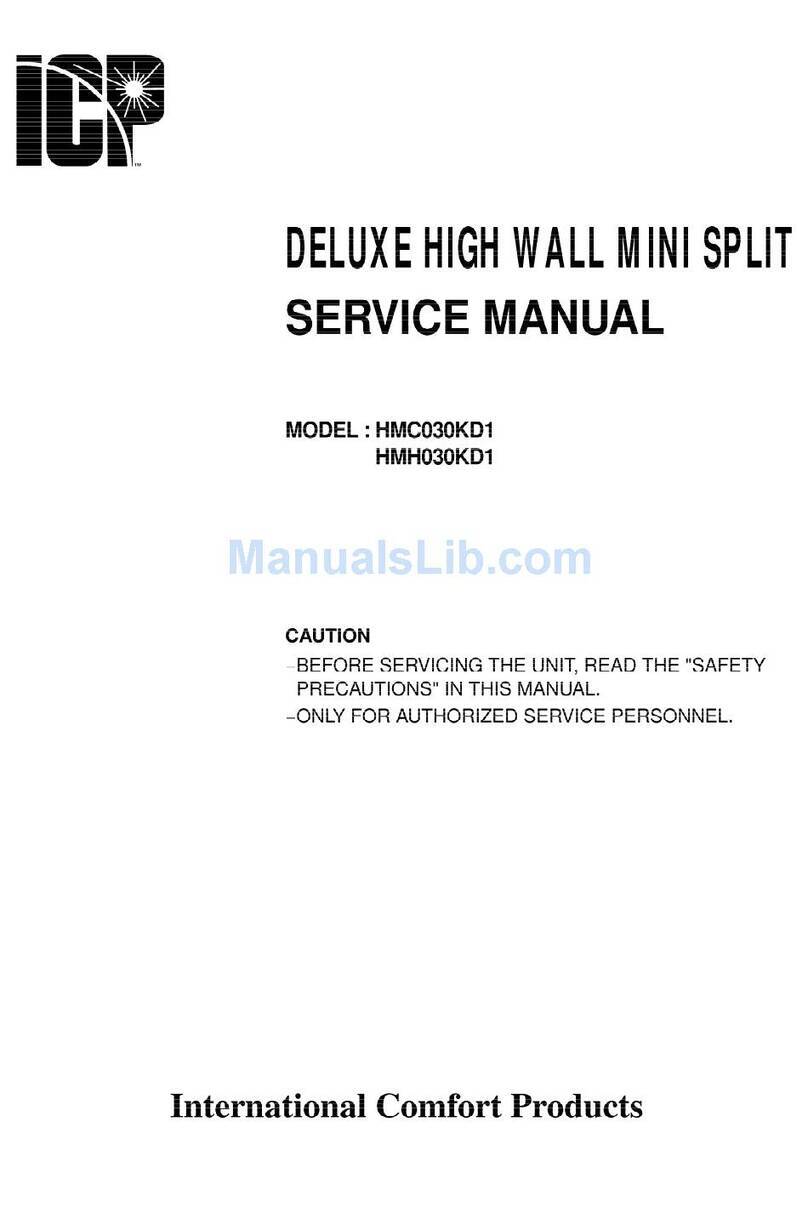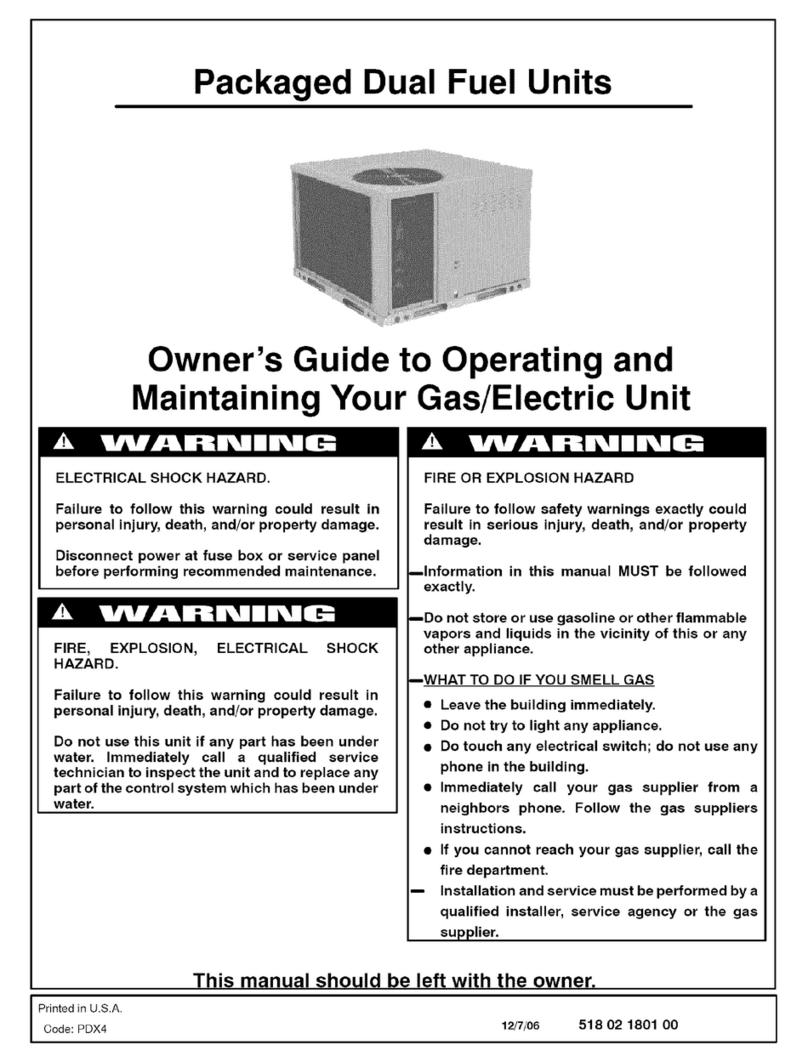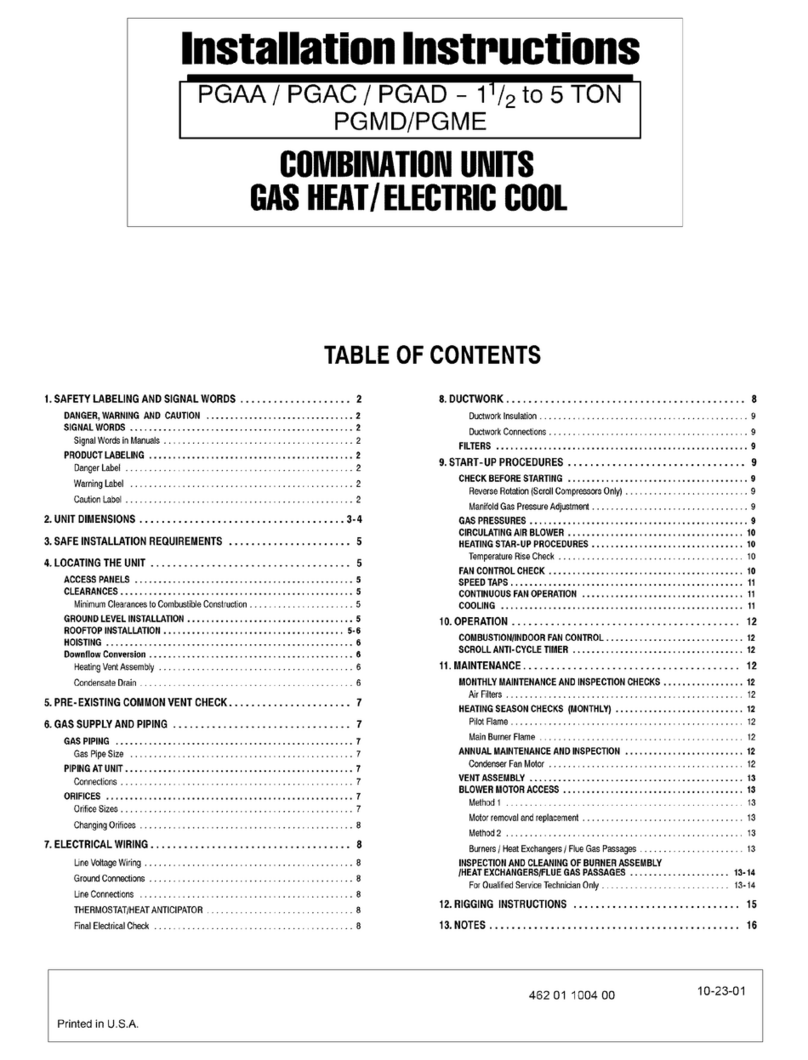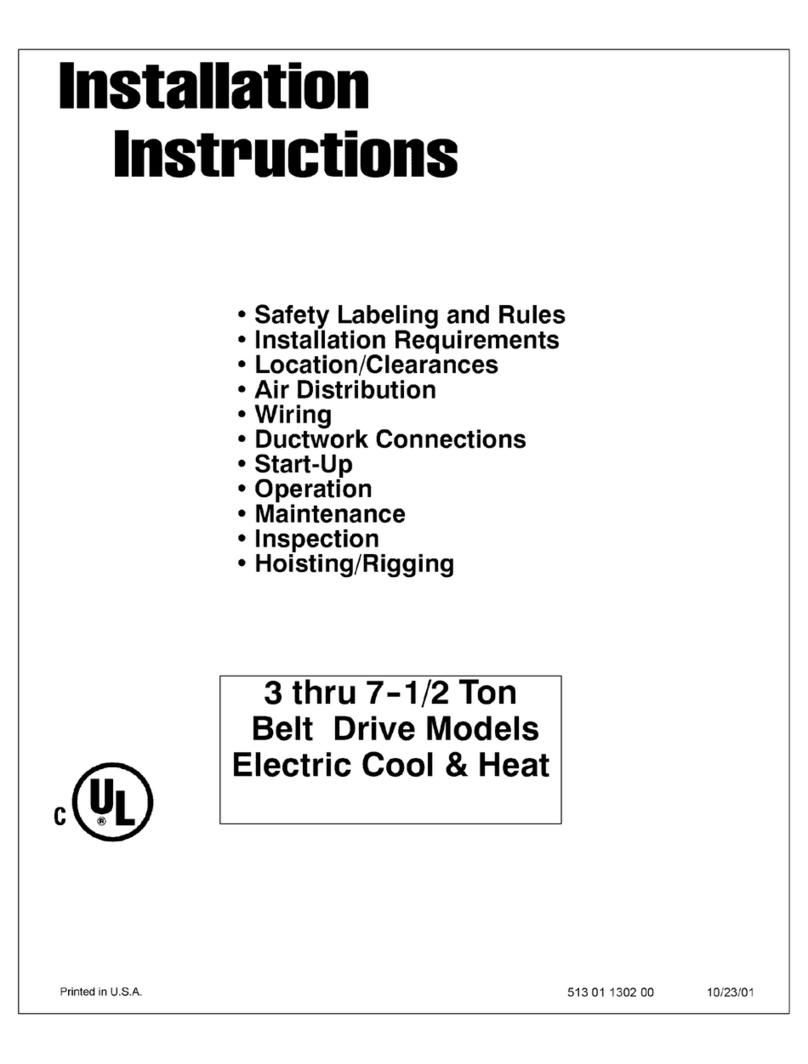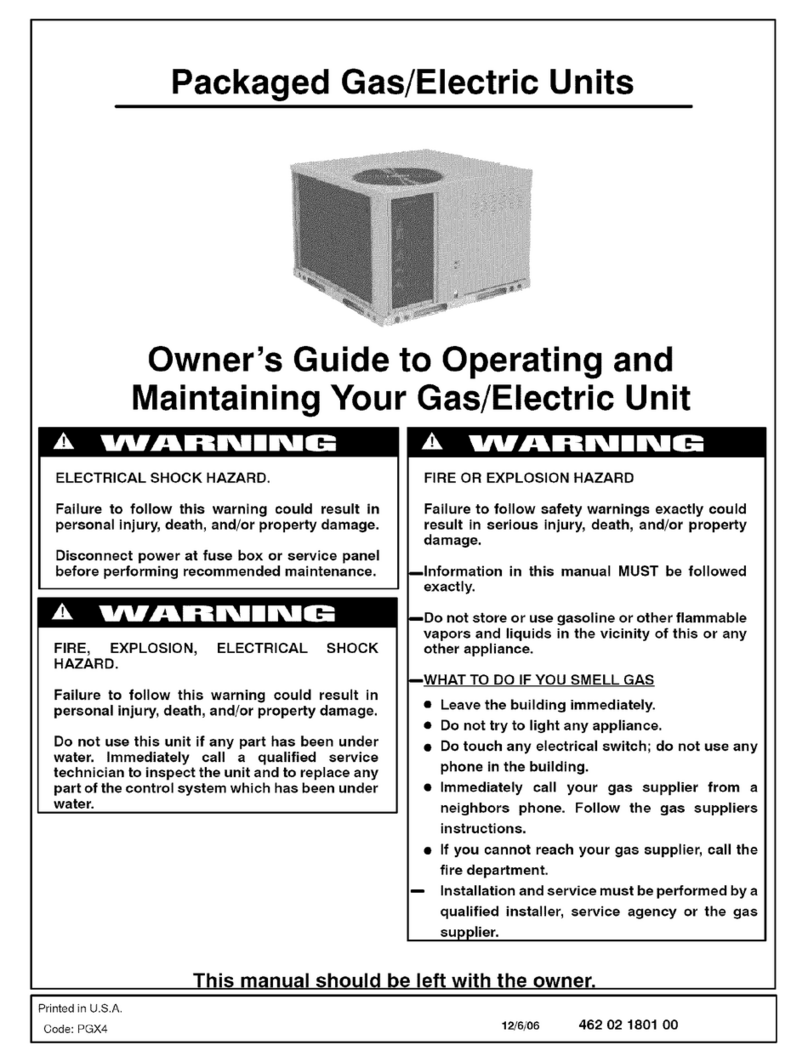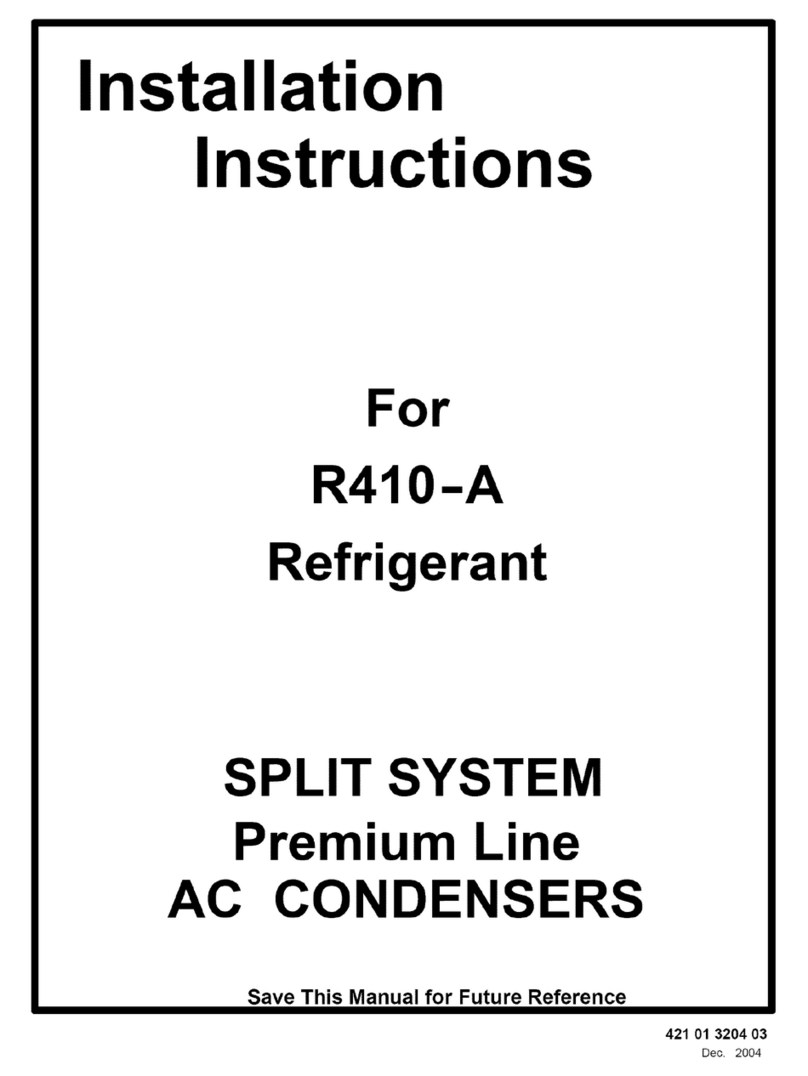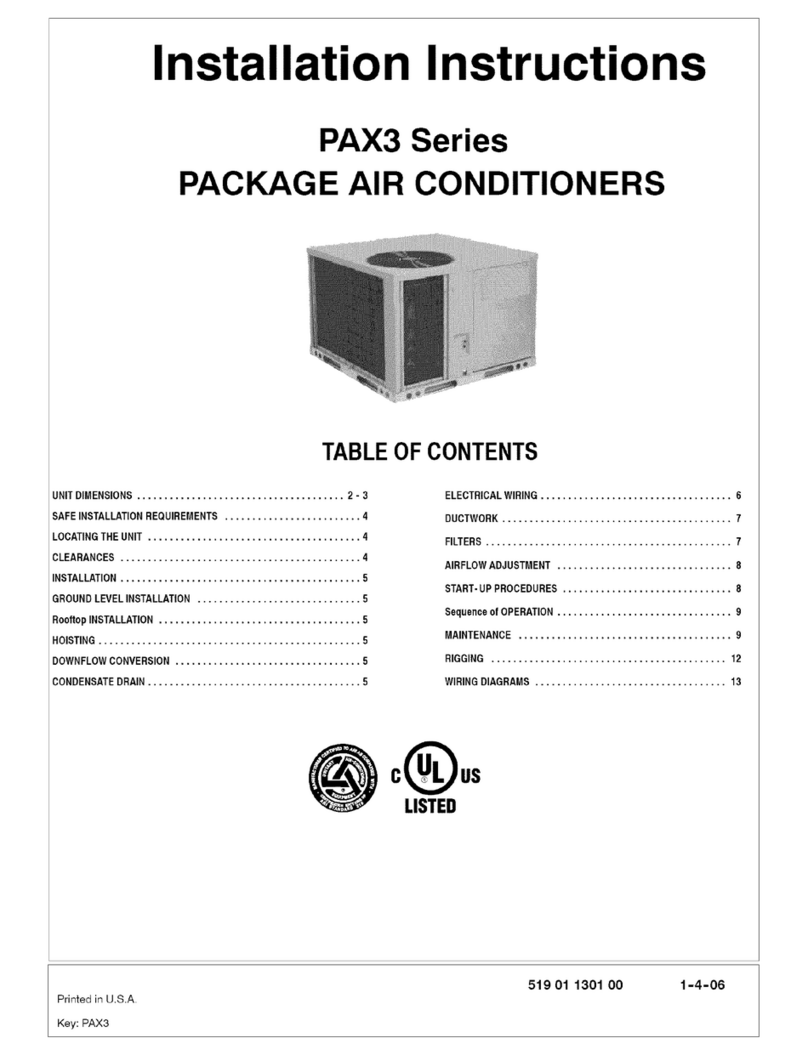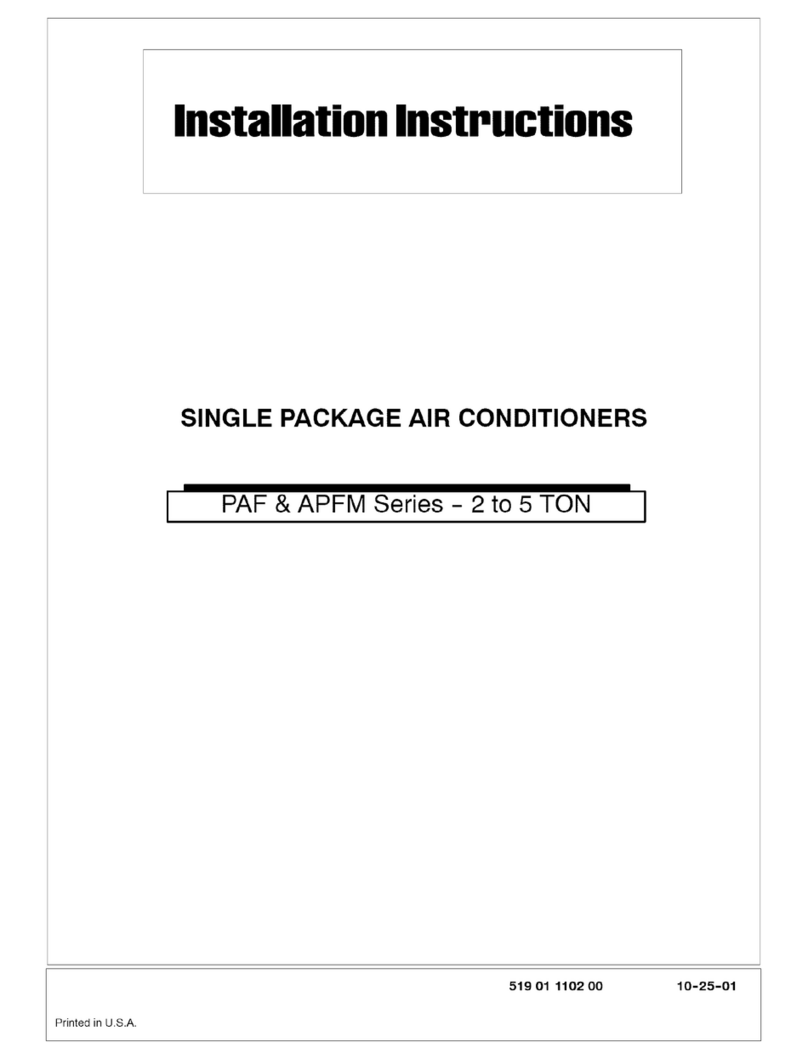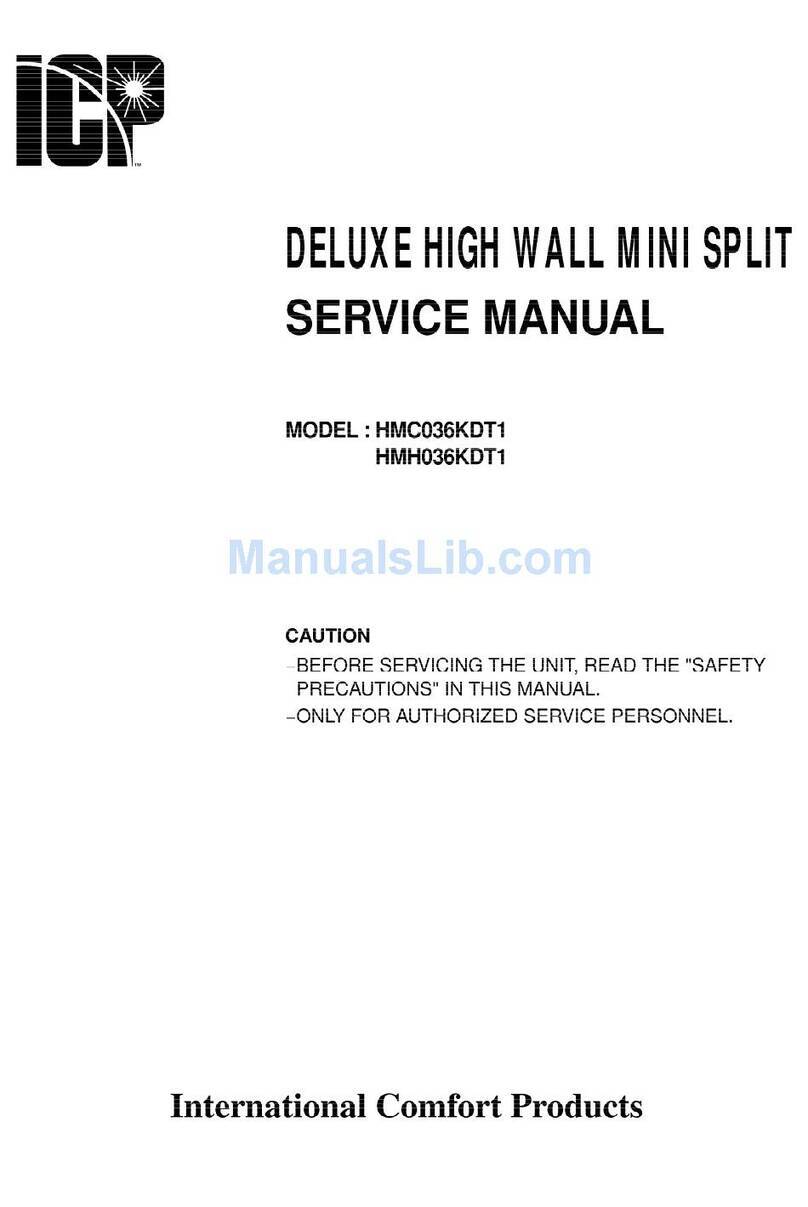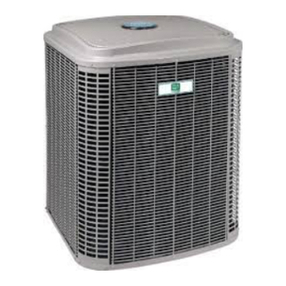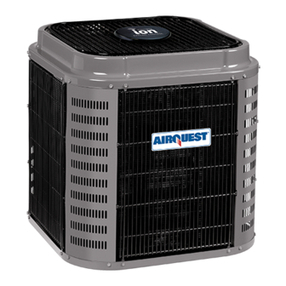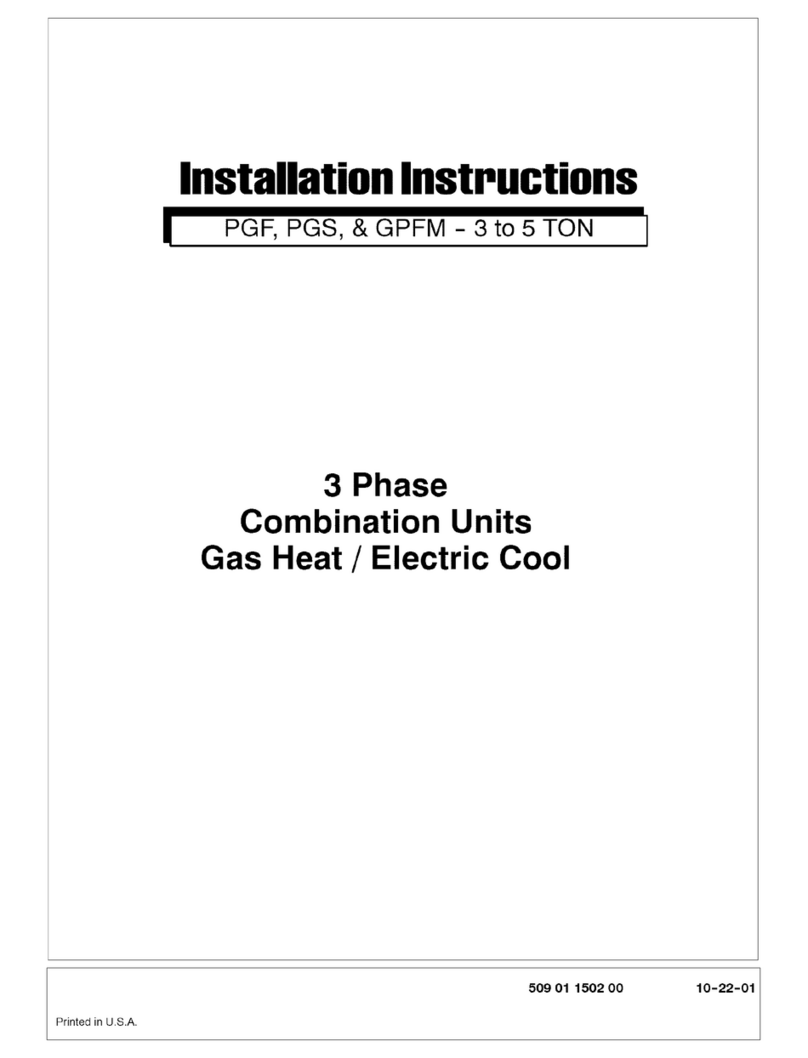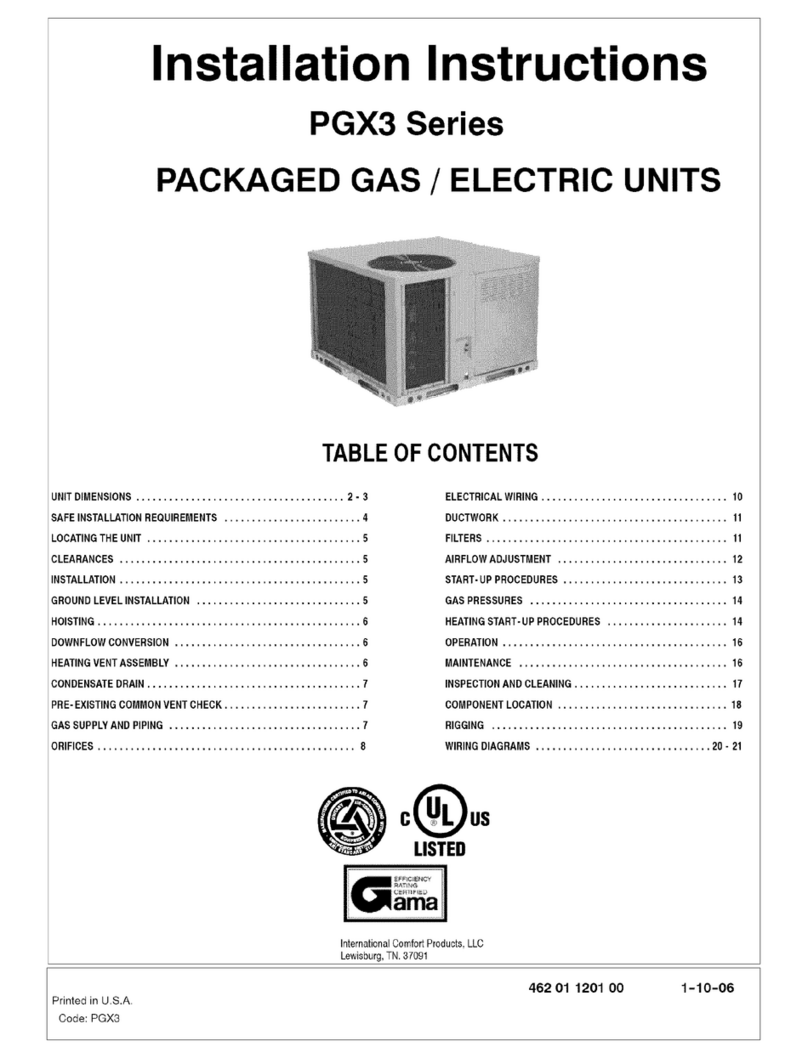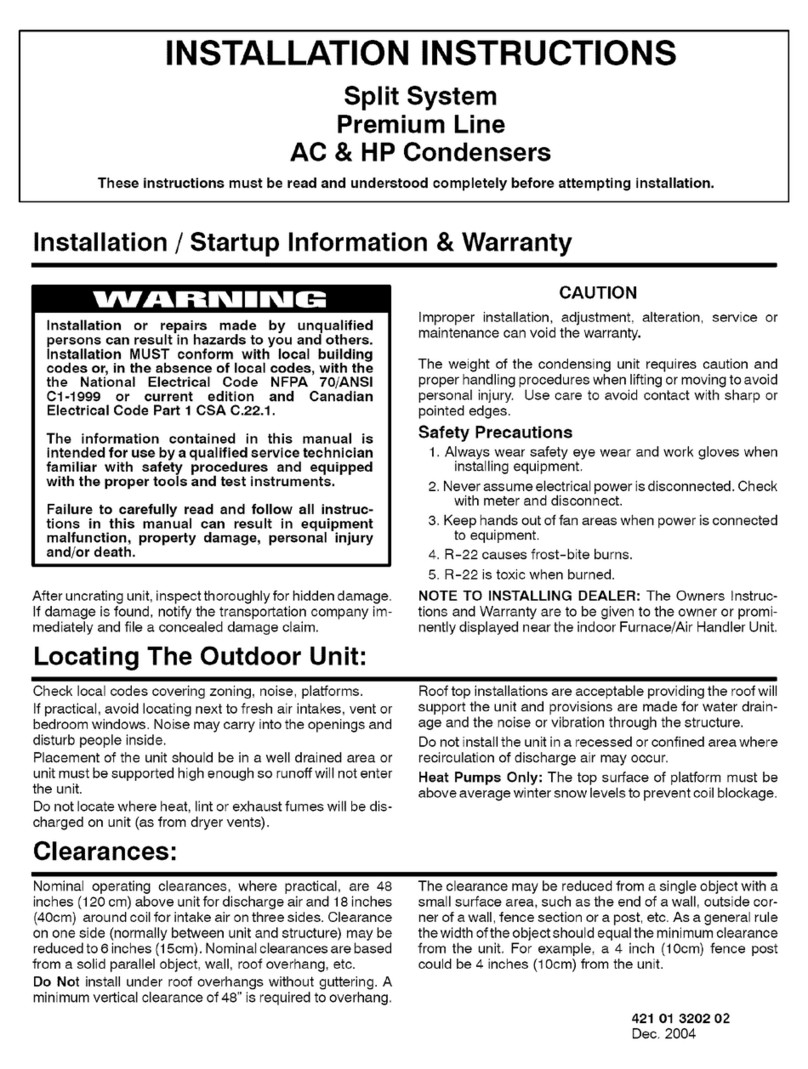
SAFETYCONSIDERATIONS
Improper installation, adjustment, alteration, service
maintenance, or use can cause explosion, fire, electrical
shock, or other conditions which may cause death,
personal injury, or property damage. Consult a qualified
installer, service agency, or your distributor or branch for
information or assistance. The qualified installer or
agency must use factory-authorized kits or accessories
when modifying this product. Refer to the individual
instructions packaged with the kits or accessories when
installing.
Follow all safety codes. Wear safety glasses, protective
clothing, and work gloves. Have a fire extinguisher
available. Read these instructions thoroughly and follow
all warnings or cautions included in literature and
attached to the unit. consult local building codes, the
current editions of the National Fuel Gas Code (NFGC)
NFPA 54/ANSI Z223.1, and the National Electrical Code
(NEC) NFPA 70.
In Canada refer to the current editions of the National
Standards of Canada CAN/CSA-B149.1 and .2 Natural
Gas and Propane Installation codes, and Canadian
Electrical Code CSA C22.1
Recognize safety information. This is the safety-alert
symbol /_. When you see this symbol on the unit and in
instructions or manuals, be alertto the potential for personal
injury. Understand these signal words: DANGER,
WARNING, and CAUTION. These words are used with the
safety-alert symbol. DANGER identifies the most serious
hazards which will result in severe personal injury or death.
WARNING signifies hazards which could result in personal
injury or death. CAUTION is used to identify unsafe
practices which may result in minor personal injury or
product and property damage. NOTE is used to highlight
suggestions which will result in enhanced installation,
reliability, or operation.
Note: Installer: This manual should be left with the
equipment user.
FIRE, EXPLOSION, ELECTRICAL SHOCK HAZARD
Failure to follow this warning could result in personal
injury, death or property damage.
Installation and servicing of this equipment can be
hazardous due to mechanical and electrical
components. Only trained and qualified personnel
should install, repair, or service this equipment.
CUT HAZARD
Failure to follow this warning could result in personal injury,
or death.
When removing access panels or performing
maintenance functions inside your unit, be aware of sharp
sheet metal parts and screws. Although special care is
taken to reduce sharp edges to a minimum, be extremely
careful when handling parts or reaching into the unit.
ELECTRICAL SHOCK HAZARD
Failure to follow this warning could result in personal injury
and/or death.
Before performing recommended maintenance, be sure the
main power switch to unit is turned off and lock-out tag is
installed.
FIRE, EXPLOSION, ELECTRICAL SHOCK HAZARD
Failure to follow this warning could result in personal
injury, death and/or property damage.
1. Do not turn off the electrical power to unit without first
turning off the gas supply.
2. Before attempting to start the gas heating section,
familiarize yourself with all the procedures that must be
followed.
FIRE, EXPLOSION HAZARD
Failure to follow this warning could result in personal
injury, death, and/or property damage.
Do not attempt to light by hand.
UNIT INTRODUCTION
This unit is a small packaged gas heat/electric cooling
system that can utilize the comfort of gas heating packaged
along with efficient electric air conditioning.
Starting or Shutting Unit Off:
Note: Your combination heating/cooling unit is equipped
with an automatic direct spark ignition and power
combustion blower.
To Start Unit Gas Heat:
Refer to Figure 1 for location of unit access panel. Refer to
Figure 2 for location of gas valve. Refer to Figure 3 while
proceeding with the following steps.
1. Set the temperature selector on room thermostat to the
lowest temperature setting and set system switch to
HEAT.
2. Close the external manual gas shutoff valve.
3. Turn off the electrical supply to the unit.
4. Remove the control access panel with a 5/16" nut
driver. See Fig. 1.
5. Move the selector switch on the internal gas valve tothe
OFF position and wait 5 minutes. See Fig. 2.
6. Move the selector switch on the internal gas valve tothe
ON position.
7. Replace the control access panel.
8. Turn on the electrical supply to unit.
9. Open the external manual gas shutoff valve.
10. Set the temperature selector on room thermostat
slightly above room temperature to start unit. The
induced-draft combustion air fan will start. Main gas
valve will open and main burners should ignite within 5
seconds. If the burner does not light within 5 seconds,













